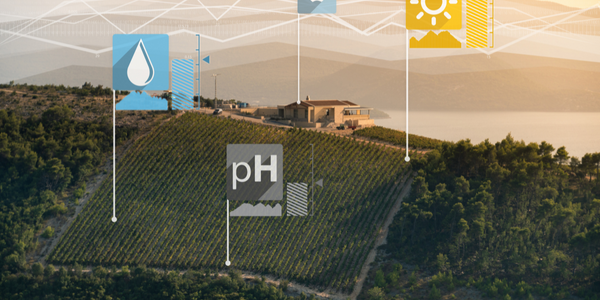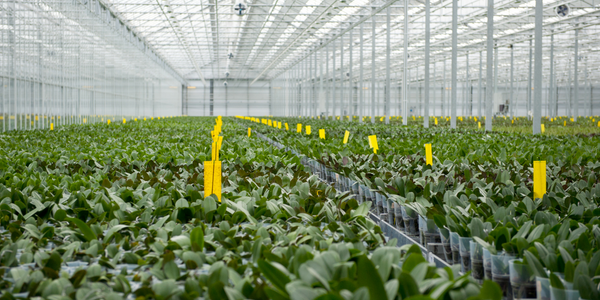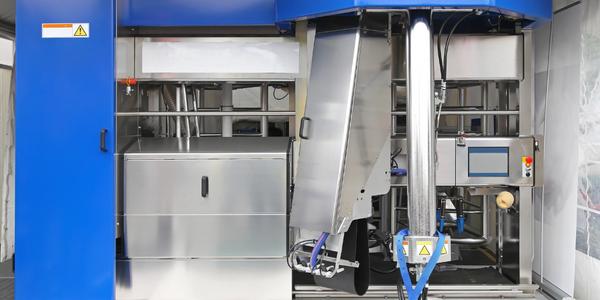技术
- 应用基础设施与中间件 - 数据可视化
- 传感器 - 环境传感器
适用行业
- 农业
- 建筑物
适用功能
- 设施管理
用例
- 农场监控与精准农业
- 智能灌溉
关于客户
Urban Cool Farm 是一家小型家庭经营的室内农场,专门生产微型蔬菜和新鲜香草。农场距业主住处两个多小时车程,日常运营和维护面临巨大挑战。尽管对植物栽培有很好的了解,但其设施缺乏自动化意味着业主必须每天手动设置计时器和其他气候控制设备。这不仅消耗了他们大量的时间,而且由于涉及劳动力和差旅费用,还增加了农场的维护成本。
挑战
Urban Cool Farm 是一家小型家庭经营的室内农场,在维持其设施的日常运营方面面临着重大挑战。该农场专门生产微型蔬菜和新鲜香草,距离业主住所有两个多小时的路程。尽管有计时器和其他用于灌溉、照明和气候控制的控制器设备,但该农场缺乏自动化。业主必须每天前往该设施设置计时器和其他气候控制设备,并检查是否有任何故障或异常情况。这不仅消耗了大量的时间,而且由于涉及人工和差旅费用,还增加了室内农场的维护成本。
解决方案
Urban Cool Farm 引入了 Farmio 解决方案,该解决方案使用价格实惠且广泛使用的通信设备集成了农场现有的传感器和控制设备。这实现了远程连接,为业主提供了对其生长区域内所有环境因素的完整、准确的可见性和控制。凭借实时监控和自动化控制、自定义规则集、即时通知和数据可视化,Farmio 改变了 Urban Cool Farm 的管理方式。自动化系统定时定时器,并根据定期pH和EC测量结果,在需要时自动将营养物质和酸碱调节剂添加到灌溉池中。如果环境条件超出所需值范围,Farmio 会向业主发送通知,允许他们远程调整设置。
运营影响
数量效益

Case Study missing?
Start adding your own!
Register with your work email and create a new case study profile for your business.
相关案例.

Case Study
Intelligent Farming with ThingWorx Analytics
Z Farms was facing three challenges: costly irrigation systems with water as a limited resource, narrow optimal ranges of soil moisture for growth with difficult maintenance and farm operators could not simply turn on irrigation systems like a faucet.

Case Study
Energy Saving & Power Monitoring System
Recently a university in Taiwan was experiencing dramatic power usage increases due to its growing number of campus buildings and students. Aiming to analyze their power consumption and increase their power efficiency across 52 buildings, the university wanted to build a power management system utilizing web-based hardware and software. With these goals in mind, they contacted Advantech to help them develop their system and provide them with the means to save energy in the years to come.

Case Study
Greenhouse Intelligent Monitoring and Control Solution
Farming Orchids is the most successful form of precision farming in Taiwan, and also the most exported flower. Orchids need a specific temperature and humidity conditions to grow and bloom, and its flowering time may not be in line with market demands, so the price collapses when there is overproduction. Therefore, some farmers began to import automated greenhouse control systems for breeding and forcing, which not only improves quality, but also effectively controls the production period and yield to ensure revenue. In 2012, an orchid farmer built a Forcing Greenhouse of about 200 pings (approximately 661 Square Meters) in Tainan, Taiwan. The system integrator adopted Advantech’s APAX-5000 series programmable automation controllers to build the control platform, coupled with Advantech WebAccess HMI/SCADA software, to achieve cloud monitoring. The staff of the orchid field can monitor important data anytime via smart phone, iPad, and other handheld devices, and control the growth and flowering conditions. System requirements: In the past, most environmental control systems of orchid greenhouses in Taiwan used PLCs (Programmable Logic Controller) with poorscalability and control, and could not be connected to the Internet formonitoring from the cloud. For advanced database analysis and networking capability, the PC platform must be adopted. Therefore, PAC Systems (Programmable Automation Controller) with both PLC programming capabilities andPC functions is a better choice.The environmental control of the Orchid greenhouse switches on and off devices like fan, shade net, cooling/heat pump, liquid flow control, water-cooling wall etc. It is controlled by a control panel of electric controllers, and is driven by a motor, to adjust the greenhouse temperature, humidity, and other environmental conditions to the set parameters.

Case Study
Intelligent Building Automation System and Energy Saving Solution
One of the most difficult problems facing the world is conserving energy in buildings. However, it is not easy to have a cost-effective solution to reduce energy usage in a building. One solution for saving energy is to implement an intelligent building automation system (BAS) which can be controlled according to its schedule. In Indonesia a large university with a five floor building and 22 classrooms wanted to save the amount of energy being used.









